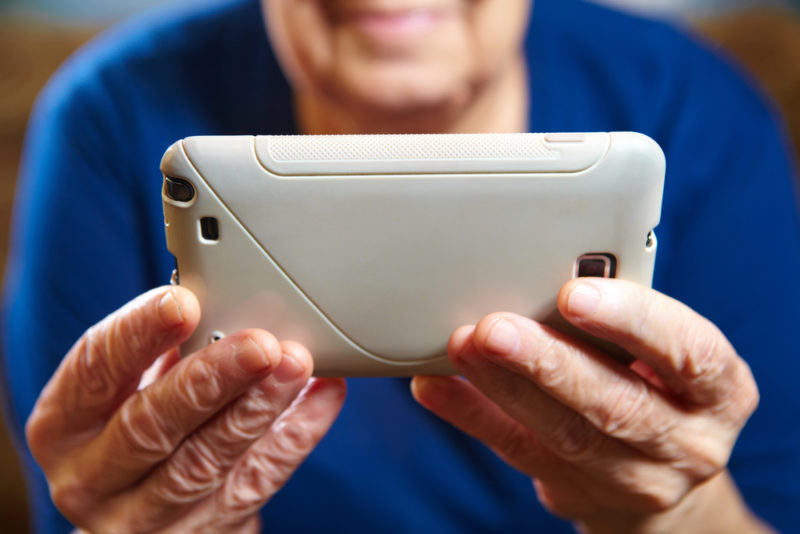Unpacking the myths and facts around telehealth (online) consultations
With the ongoing impact that COVID-19 is having on our everyday lives, the healthcare system has had to rapidly adapt in order to continue to provide the valuable services that we all need to access.
You may have heard the word “telehealth” being used a lot in recent times, particularly with the Australian Government expanding its funding and service, but telehealth has actually been around longer than you might have thought.
A quick recap: Telehealth is the delivery of health services via the internet. It has been a part of many health services well before the COVID-19 pandemic, with increasing numbers of Australians in both rural and metropolitan areas using a telehealth service due to the various advantages it offers.
(At The Physio Co, we use the term ‘online consultations’. Further reading – CASE STUDY: How to use The Physio Co’s online physio consultation service)
A number of myths surround the efficacy of the telehealth model for providing physiotherapy, as well as other health services. The aim of this article is to address these myths while at the same time lay out the facts so you can work out whether telehealth is something for you.
A convenient and viable financial option
In many cases, telehealth is an effective alternative to face-to-face consultations as it is convenient, reduces travel to and from clinics and can be a cheaper option for ongoing physiotherapy.
In today’s global pandemic situation, telehealth is more important than ever, as it allows health professionals to continue to provide services to clients without physically coming into contact with them, keeping both the client and the health professional safe. For us physios, it enables us to continue to provide the physiotherapy needs of the population during a time where hospitals and GP services are already under pressure.
Let’s have a look at some myths and facts around the delivery of physiotherapy services via telehealth to help clear up any confusion.
MYTH: Telehealth is only for people in remote and rural areas.
Fact: It’s true that telehealth originally came into existence to help people in remote areas who did not have access to medical services in the nearby vicinity. However, in the hustle and bustle of this fast-paced life, telehealth is helpful for everyone. It saves a lot of time travelling, parking and requires less time to attend the appointment.

MYTH: You require a special device for Telehealth.
Fact: Telehealth can be accessed through a laptop, tablet device or mobile phone with a camera. The device requires an internet connection which is omnipresent in the current world. In some instances, a simple telephone can be used as well.
MYTH: I cannot use Telehealth because I’m not tech savvy
Fact: Telehealth is very simple and easy to use. It really is not more difficult than using Google to complete an internet search and does not require any advanced computer skills. Your physiotherapist will take you through what you need to do for your appointment. Easy!
MYTH: The physio cannot help without hands-on treatment
Fact: The ‘gold-standard’ in physiotherapy treatments are often focused around advice and exercise prescription. In many cases, physiotherapists provide clear, appropriate instructions to a client and it’s you, the client, who performs the exercise. The physio can guide, correct and observe the movement pattern online, providing adjustments with clear instructions instead of placing their hands on. Similarly, a large part of physiotherapy is education, which can also be easily done online.
MYTH: Telehealth is not comfortable
Fact: Telehealth is actually more comfortable as it can be done in the comfort and privacy of your own home, in easy comfortable clothes. There’s no need to dress up and travel with pain or discomfort. Physio can be accessed at home with a click of a link and most parts of the body can be examined by slightly adjusting the screen of the laptop.

MYTH: The physio cannot examine my body part without touching me
Fact: The majority of a physio assessment is conducted through asking thorough questions and observing joint movement and movement patterns. There is only a small portion of the assessment that may require assessment by actually touching, and this is not required in every case. There are other ways the physio can use to gain the same information. In cases where it is required, the physio can suggest an alternative method.
MYTH: Telehealth is not a tested method
Fact: There have been multiple studies on the effectiveness of telehealth and they have all shown positive results. Studies have actually found greater patient satisfaction and better adherence to exercise plans with telehealth compared to standard in-person consultations.
MYTH: Telehealth appointments are more expensive
Fact: Telehealth appointments are generally cheaper than standard home visits as the client is not paying the physio to travel to them. Telehealth appointments with The Physio Co are cheaper than in-person consultations (click here for more information).
Also, there is no need to sit and wait in the waiting room for the appointment, so it’s time and cost-efficient for both the therapist and the client.
MYTH: Telehealth isn’t safe
Fact: All safety concerns are examined prior to your first consultation with a telehealth physio. If there are concerns, you will be advised, where possible, to have a companion with you during your appointment so that the physio has an ‘extra pair of hands’ if needed.
You will also be guided through how to set yourself up as safely as possible to complete exercises (e.g. placing a chair behind you and standing with hands on the bench) before starting.
Book an online consultation with a TPC physio
With the possibility that social distancing and self-isolation remain our reality for some time to come, your mobility, strength and overall physical function shouldn’t be left to deteriorate. With telehealth being an option with The Physio Co, let us help you or your loved ones keep moving in these challenging times!
Next steps?
Please feel free to visit the online consultations page on this website or contact us for more details.
(Article written by Kruti Kapadia)

 1300 797 793
1300 797 793
